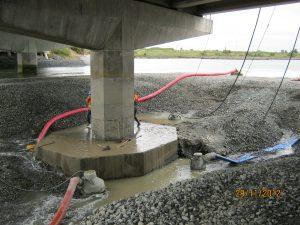Your Project
Waterways operations
When the operations phase starts, it’s a matter of making sure that you carry out everything in your plan, and continuously communicate and review to make sure that your efforts are successful and meet the standards required by Permitted Activity rules or Resource Consents.
This Operations section covers
You may also need to check back to the Waterways: Planning section to review the guidance on:
- Check your site
- Minimise disturbance to the water flow and wet area
- Minimise disturbance to the site
- Seasonality
- Understand the wider catchment of your site
- Consider the sensitivity of the catchment
- Consent and obligations
- Management Plan
- Staging the activities
- Resources
- Stakeholders
- Communication.
Meetings
Make sure that there is a pre-start briefing meeting at the beginning of the project, on site, with as many staff and relevant stakeholders assembled as possible.
Make sure that there is a daily planning meeting each morning. This is to brief staff about the upcoming day’s work, specific tasks, associated hazards and how environmental risks will be addressed. It is also a chance to share relevant information, eg weather forecast.
Monitoring

Discharge of Estuary of Avon and Heathcote Rivers / Ihutai water from the repair of the Bridge St bridge (Source: Fulton Hogan).
Remember that the colour or appearance of the water is not always a relevant indication of its state. You will need to carry out formal monitoring downstream of your work area, eg for clarity, total suspended solids (TSS), pH and oxygen levels as appropriate.
There are various monitoring tools available, including handheld TSS meters and clarity tubes. Be aware though that findings from these tools can differ slightly according to the circumstances and the user, so make sure that users are trained.
Use the monitoring findings to assess your activities and to change them if necessary.
Keep records of monitoring so that you can demonstrate compliance to relevant parties, including Environment Canterbury.
Watch this video explaining why to sample, and where:
Watch this video explaining how to sample total suspended solids:
Watch this video explaining how to use a quick check tool for total suspended solids:
Watch this video explaining how to test water clarity:
Watch this video explaining how to test pH using a meter and pH strips:
End-of-day
Shut down the site at the end of each day. To prevent vandalism and damage, to the environment or to the equipment, you may need to:
- Leave fences up and secure them
- Cover any exposed areas, eg in case there is a flood or rain overnight.